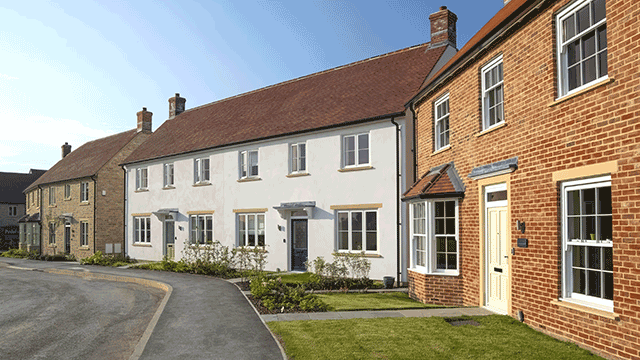Please could you indicate what items should be noted during a normal house inspection for valuation or purchaser’s report?
This question covers many types of house inspection, in respect of which there may be specific guidelines laid down, for example the recently published Mortgage Valuations Guidance Notes for Valuers (RICS/ISVA) in the Manual of Valuation Standards (RICS) and the building societies in their notes to society surveyors and in the guidance given to surveyors using house-buyer report forms. However, we believe that what this inquiry is really saying is “please give me some idea of what I should be doing, looking for, thinking about, noting, when I am actually at a house and trying to report upon observable physical factors”. For this reason other matters such as market analysis, an analysis of the immediate neighbourhood and planning inquiries will not be specifically covered.
Every house is different, and so it is rather difficult to produce a 100% check list. That which follows, accordingly, is not intended for the experienced practitioner: it is for the trainee surveyor who may have a theoretical knowledge of building construction but has had little opportunity to put this into practice.
Throughout the inspection the surveyor must remember an obvious point — that the outside and the inside of a property are closely related. Thus internal defects need to be checked against possible external causes, and external faults should be checked for internal reactions. We will consider elements of an internal inspection, and then those of the external inspection. Some surveyors would inspect the outside then the inside. Both approaches are acceptable provided the surveyor relates the two and rechecks one against the other. However, it is insufficient merely to note the absence of, say, a section of an external rainwater pipe. One must examine the inside very carefully and if there are no obvious signs of damp penetration indicate to a client what is wrong outside, what the observable condition is inside, and what might be happening if there is as yet nothing observable (or it has been covered up) and what may happen if the external defect is not made good.
Internal
Roof void
Provided there is some means of gaining access to the roof void then every inspection must include this part of the property. If there is no access it is important to say so, and to judge the implications. No access to the roof in a 16th-century thatched cottage with bedrooms clearly built into the roof structure might be logical. No access to a roof in a 20th-century property which, from the position of overflow pipes and cistern noises, clearly houses the cold water storage tank, is not logical. Nor is it normal practice to modernise older-style properties without providing access to the roof space. But bad practice has been known to include boarding and papering over a hatch to prevent buyers and surveyors from viewing the roof void.
Check and note the adequacy of structure having regard to the span between walls and roof covering. Replacement of old asbestos slates with modern interlocking concrete tiles, for example, could exert an excessive load if the timbers and structure are inadequate.
Check the spacing of trusses, rafters, joists, and the condition of joists, gang nails or other fixing. Check timber sizes, note supports such as purlins, wall plates and check for ventilation and signs of condensation. Check for woodworm, rot and the provision and depth of insulation.
Check the underside of roof covering (felt, boards etc) and note any deterioration, or check battens and condition of tiles, slates and fixings and note if there is any daylight and/or rain penetration.
Check and note material and condition of walls in roof areas, check for fire walls in terraced housing. Check chimney stacks and rendering: note signs of gas or smoke emission.
Check tanks and pipes for signs of deterioration, particularly older tanks, check insulation. In hard water areas check function of ball valves. Note if header tanks have been provided for central heating. Check for overflow pipes and adequacy of size and fall.
Check for signs of vermin, birds and particularly for bats. Check conditions of hatches and ladders.
Flat roofs
It is very unusual to be able to gain access to the underside of flat roofs. Only the most recently constructed flat roofs have provision for adequate ventilation of timbers, so careful note should be made of older flat roofs especially in areas of high condensation such as over bathrooms and kitchens.
Walls and partitions
Check thickness of walls at wall openings. Note whether external walls are plastered, dry lined or timber framed. Check internal faces for signs of cracking, hollow patches. Pay particular attention to cracks other than obvious drying out of plaster at joints etc.
Check walls are vertical. Check for signs of damp penetration at all levels and for rising damp at ground-floor level. It may be possible to identify the structure of walls and partitions from their thickness and from inspection in the roof, under stairs and in cupboards.
Check where new openings have been made and supporting beams installed. Determine adequacy of, and observable size of, beams and note any signs of movement around bearing points.
Doors and windows
Check that all doors and windows open and close, noting type of materials. Check for signs of frame movement and adjustment, paying particular note to any which are not vertical or horizontal. Note condition of glazing, particularly in metal frames. If of timber construction check for signs of rot, woodworm etc. Check all door and window fitments.
Floors
Check that all floors are level and note their probable construction, eg hollow or solid. Check exposed boards and skirtings for woodworm, rot; check solid floors for signs of damp, upheaval or cracking; check all floors for movement, ie springiness.
Ceilings
Endeavour to determine material, eg plasterboard, lath and plaster; check for cracks, and “key” in the case of lath and plaster.
Pay careful attention to newly lined or artex ceilings, especially in old properties where they may have been applied over old lath and plaster and will therefore crack up in six months. Note any cracks, and judge if they are hairline at joints, or whether they are due to structural movement, with cracks across a corner, for example. Do the ceiling heights meet current building regulation standards?
Stairs
Check where timbers are visible such as under stairs for construction, condition, timber infestation etc. Note safety.
Cupboards
Examine inside of all cupboards for possible signs of structural defects, which may be visible on unplastered walls inside fitted cupboards but covered by decorations on interior walls.
Wiring
Note age and quality of light fitments, power switches and all visible wiring. Check meters and visible wiring. Note if in obvious need of rewiring, or refer to electrician.
Services
Check function of wcs, hot and cold water supply, shower fitments and where possible central heating; open and close radiator valves, note condition of radiators and fittings. Check for signs of recent leaks. Check pipework where visible. Check main stop cock for ease of working and secondary cocks to tanks etc. Check visible condition of wcs, basins, sinks, baths and storage tanks. Note age of hot water tanks, particularly in hard water areas.
Check splash backs and tiling. Note any fungus growth and hollow patches behind tiling. Check response of boilers if switched on. Check for energy equipment such as room thermostats and whether they function.
Check observable condition of flues. Note which mains supplies are connected and nature of any central heating and hot water systems, eg solid fuel.
Decorations
Note general decorative condition.
External
Roof
Check roof for signs of movement, slipped, cracked or missing tiles or slates. Check condition of chimney pots, stacks, flaunching and flashings. Note any discoloration of chimney flue, which may be blackened due to effects of damp and gas.
Check condition of ridge and hip tiles, including joints. Check gutters, downpipes and fascia boards. Note whether downpipes are connected to soakaways, and look for obvious leakages and water staining of brickwork.
Walls
Check thickness and, if brick, endeavour to assess construction — 9in solid, 10 1/2 in cavity, for example. Note if timber framed and/or externally clad. (The obvious is sometimes missed, and the obvious can lead to incorrect conclusions. Recent correspondence, for example, indicated that cavity walls were constructed as early as the 1850s, while stone walls may be clad with brick facings, and brick walls with stone facings. The current “personalising” of terraced houses is not new!) Check walls are square, note any bulges. Look to see if there are any signs of “bore holes”; small and regularly spaced at ground level, they may indicate the injection of silicon damp proofing or at approximately 1 m to 2 m spacings they may indicate that a cavity wall has been filled with insulation.
Check for a dpc, noting condition and whether it is clear of soil and paving. Check surface of walls for signs of frost action and the condition of pointing. Check to see if there are any signs of rusty marks on walls which might indicate deterioration of wall ties. Check for air bricks and note their adequacy and function. Check condition of any external cladding. Check for any signs of subsidence, particularly on clay soils or made up ground.
Doors and windows
Check for ease of opening, check frames are square, check whether doors have been eased recently. Note type and condition of locks and other door furniture.
Outside
Lift manhole covers and check for free running of water to the main sewer or septic systems. If connected to septic tank, note age, type, position and if necessary check authority for frequency of emptying.
Garages, sheds, outbuildings, walls and fences should all be inspected and reported upon adequately in terms of materials, construction and condition.
Decorations
Check and note condition
Alterations
Check as far as possible that all alterations and improvements comply with current building regulations and were carried out where appropriate with all necessary consents.
Inquiries of the owner-occupier
All information provided by an owner or occupier should be checked, but it is generally sensible to ask if there are any guarantees for timber or damp treatment; whether any grants have been obtained for improvement work; and, if building work has recently been undertaken, the name of the contractors.
Reporting
The foregoing gives some idea of what a surveyor will be looking for, and doing, when he or she carries out a house inspection. What we have not covered is the question of what to do apart from observe, note and possibly be suspicious about everything.
There are those who would suggest that there is a major difference between survey work (a) for advice on asking price; (b) for advice on purchase price; (c) for advice on mortgage; (d) for advice for a report such as the RICS’ house-buyers’ report; (e) for a full report for an intending purchaser.
There is certainly a difference in terms of the detail noted during an inspection. On the latter point clearly the more information that has to be recorded the longer it will take to complete the inspection. The professional question is whether the surveyor’s duty of care varies significantly between (a) and (e).
If it does, then it may be sufficient for the surveyor in (a) to take either little more note of anything other than basic information on size, design, construction and decoration to advise on a sale price and a marketing campaign. Thus few residential negotiators would want to know what is inside the roof: caveat emptor, let the buyer beware and check for himself that the roof is not about to collapse. On the other hand forewarned is forearmed, thus the more one knows and understands about a property the easier it is to negotiate on behalf of a vendor where the buyer has been expertly advised by his or her surveyor.
Hence it is most essential for a young surveyor to gain experience of “observing”. Thus a quick visual inspection of a roof when taking on a property for sale might help in advising on both asking price and probable level of negotiated sale price, and help in subsequent negotiations. In the case of a mortgage valuation that inspection needs to be longer to see whether there is anything substantially wrong which affects the valuer’s opinion, and which needs to be drawn to the mortgagor’s and mortgagee’s attention or which may need to be the subject of a retention. The more detailed the report becomes the more important it becomes for the observation of the professionally qualified to be translated into a detailed description of what there is, what is wrong, what is or has caused specific defects, and what has to be done to put them right and at what approximate cost.
We reiterate our earlier statement that these notes are only intended for trainee surveyors to help them learn to inspect and survey residential property and the better to appreciate what is happening when they accompany a qualified surveyor on his or her residential inspections.









